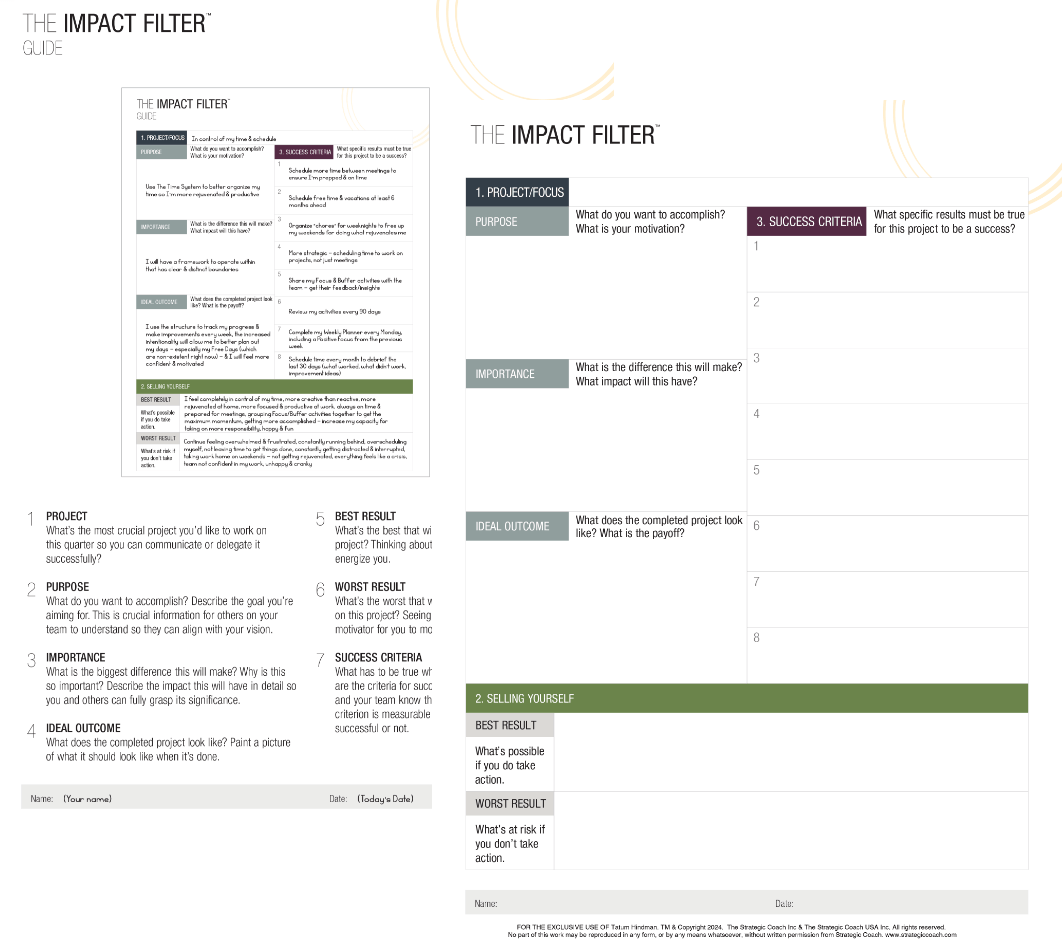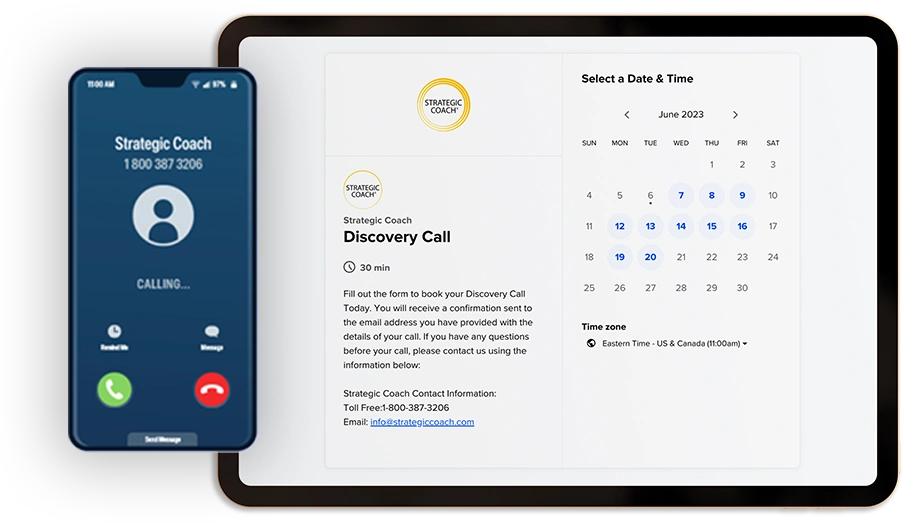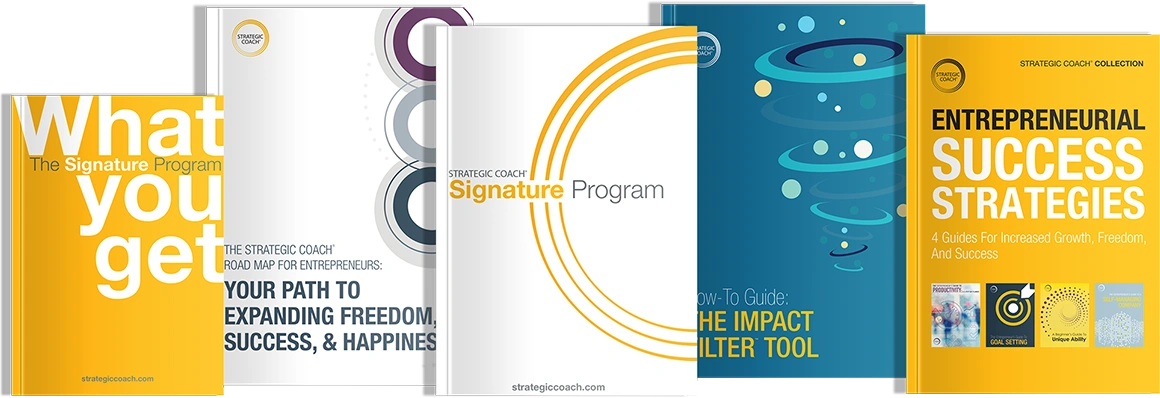5 Productivity Traps To Avoid When Growing A Business
Entrepreneurs like to see their businesses grow—not just for monetary gain, but because growth is a means to meaningful and satisfying personal growth. It’s a way to see your capabilities and impact expand, which provides immense satisfaction and energy.
Nonetheless, it’s not easy to grow a business continually.
In fact, it’s quite natural for individuals and organizations to fall into productivity traps that prevent them from growing, and, chances are, you’re already in at least one trap!
Luckily, here at Strategic Coach, we recognize that the things that seem to oppose our goals are actually the raw material for achieving them.
If you find yourself stuck in a productivity trap (or three!), consider them useful indicators of where change is necessary to move forward.
Here are the five productivity traps to avoid when growing a business so you can make the shifts necessary for growth and maintain the clarity to see opportunities and predictably take your business to the next level.
Productivity Trap #1: Poor Time Management
According to Hubstaff, a staggering 82% of people don’t have a time management system, and 80% do not feel their work is under control each day.
For entrepreneurs, this can make it difficult to get away from work, leading to burnout, stagnation, and plummeting productivity levels.
The Strategic Coach Entrepreneurial Time System includes Free Days as an essential time management strategy for optimal productivity.
Why?
Because even if you love what you’re doing, you still need to rejuvenate.
Free Days are a precondition for periods of high achievement, not something you wait for as a reward. They operate on the principle that your best results depend on having a fresh energy store to fuel your creativity. Rejuvenating before projects, events, or busy times of year keeps you in top form.
Productivity Trap #2: Lack Of Vision & Decision Fatigue
Many entrepreneurs fall into this productivity trap because they are tied up in the day-to-day complexities of their business and don’t have the time or energy to focus on growth and their vision for the future.
The challenge is to free up enough mental energy and creativity to see the opportunities for growth and understand which are most appealing and aligned with your longer-term goals.
If you think about your company as having two parts (a “present company,” which is what exists now, and a “future company” that represents where you’re going), the ideal situation is to have time to focus on both—take care of the present company so you’ll have the resources to get where you want to go, while also growing the future company so you know where you’re headed.
Having a clear vision for the future will help you identify where to spend your time, energy, and effort in the present, easing the decision-making process and immediately making you more productive.
It also means giving up the “rugged individualist” tendency to hold onto and control everything (more on this in the next trap!).
Productivity Trap #3: Isolation/Rugged Individualism
Entrepreneurship (and assuming all the risk this entails) requires a particular do-it-yourself spirit, or “rugged individualism.” You’re confident about what you have to offer, whether it’s a product, service, or other commodity, and you believe you’re capable enough to get it into the marketplace. You also accept that you’ll have to do everything without a traditional work structure.
It’s a mindset that is necessary initially, serves you well, and allows your business to grow.
However, this mindset eventually becomes a productivity trap because you can’t continue doing everything yourself if you want significant growth and freedom.
At this point, it’s essential to realize that you’re simply not good at everything involved in operating a successful business, and you probably don’t enjoy all of it.
So, narrow your focus. Find what you’re great at and what gives you energy, and go all in on that. Then, find other people who can not only do everything else but do it well and with their best selves and potential behind them.
While it takes a great leap of faith to trust others, especially after you’ve trusted only yourself for so long, getting out of this trap is also the only way to keep growing your business.
Productivity Trap #4: Doing Too Much Of The Wrong Thing
No matter what circumstances you find yourself in or what’s happening in the marketplace, politically, or in your immediate environment, your personal capability is always your best resource.
That’s why doing too much of the wrong thing—everything outside your unique capabilities—is a major productivity trap and hinders business growth. This also applies to your team members. If anyone on the team is doing too much of the wrong thing (for their particular capabilities, strengths, and talents) you can bet productivity will suffer.
Your unique attributes will consistently produce the best results, make it easy to be productive, and give you the most enjoyment.
When you know who you are, where your strengths lie, and how your skills create value, you have the opportunity to make your biggest contributions to the world. This is what we call your Unique Ability. Having this insight into yourself and your team also gives you an understanding of how to recognize, respect, utilize, and increase everyone’s capabilities.
All this translates into boosted productivity and performance so your business can thrive.
Productivity Trap #5: Procrastination
This productivity trap is a good example of a trap indicating where a change or shift is necessary. Everyone procrastinates, but not everyone goes deeper and asks why they’re procrastinating on a particular task or project.
When you get down to it, you’ll likely discover that another productivity trap is standing between you and that completed task.
Likely, you’ve tasked yourself with doing the wrong thing (trap #4) or doing it all yourself (trap #3) when it’s not within your Unique Ability. Or maybe you’ve been putting it off because you’re not fully clear on how it fits into your bigger vision (trap #2), or you simply can’t find the time (trap #1).
Once you understand why you’re procrastinating on a particular task or project, you’ll gain valuable insight into the next best step. Perhaps a redirection is in order, or it’s time to enlist a team member’s support.
If, after this assessment, the task or project is still yours to tackle, don’t worry about 100% completion. Instead, shoot for 80%.
Aiming for 80% releases the pressure of perfectionism and leaves room for you or someone else to improve upon on the result. If you think of aiming for 80% every time, you’ll get to where you want to go faster because you’ll be more relaxed, less demanding of yourself and others, and more appreciative of your progress and momentum.













